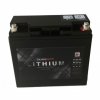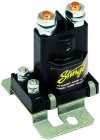If you put the cells in parallel, you are effectively creating a bigger cell, the voltage does not change, the mAh add up.
If you put the cells in series, you are creating a higher voltage battery, the voltages add up, the mAh does not change.
In both cases the power stored is the same, you measure power in Wh. Watt hours is equal to Volts x Amp hours.
Your charge rate is limited by the either the Amp capacity of the charger or by the Amp capacity of the cells, depending on which is smallest. If you increase voltage then you get more power into the cells for the same Amps.
So if you are limited to 15A charging by the charger, the 4x higher voltage of a 4S battery back allows 4x faster charging.
But if you are limited to 10A charging by the cells, the 4x higher amp capacity of a 4P pack will allow you to charge 4x faster, except that you are then limited by the 15A charger.
Charging cells at below their maximum charge rate will extend their life, so more in parallel is good, the only real reasons to increase the number in series are that high Amp chargers are expensive and tend to get rather hot.
If you put cells in parallel (1S) then you can just set the charger to charge them until they are full (4.2V), simple.
If you put them in series and they don't have identical capacities then the smaller ones will fill up first, and you must stop charging when the smallest one is full, that needs extra monitoring circuitry and becomes complex but must be done for safety. If the cells are very close in capacity then you can use a balancing circuit that will give some protection to the cells from over charging and then you my get away with not monitoring every cell voltage, but this reduces safety, especially when as cells wear out and lose capacity at different rates because some are being fully charged every time while others are only being partly charged due to their higher capacity and thus wear out slower.
Get it wrong and you can cause a fire, so make sure you know what you are doing if you chose to DIY, and remember that car interiors are not fire proof or even fire retardant, they are only built to give the occupants time to escape before the vehicle is destroyed, assuming that the occupants are fully conscious - that is seconds not minutes!





